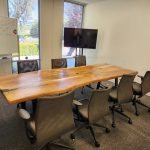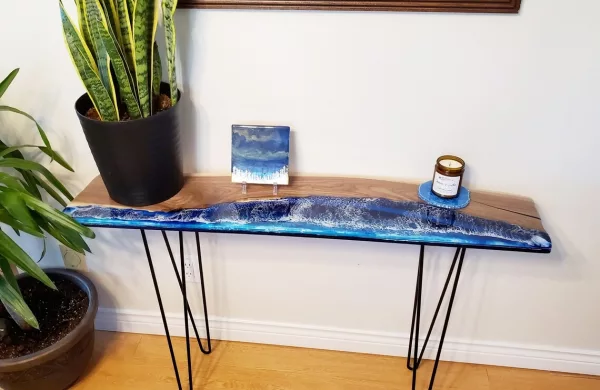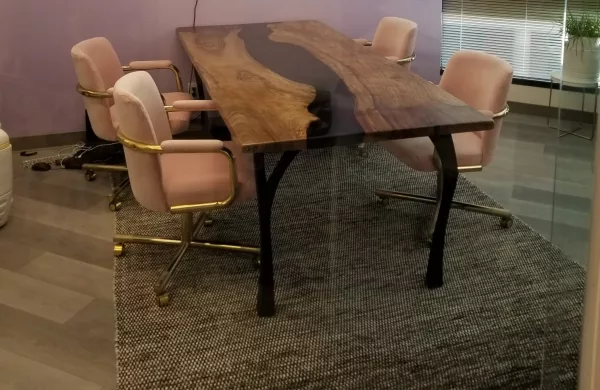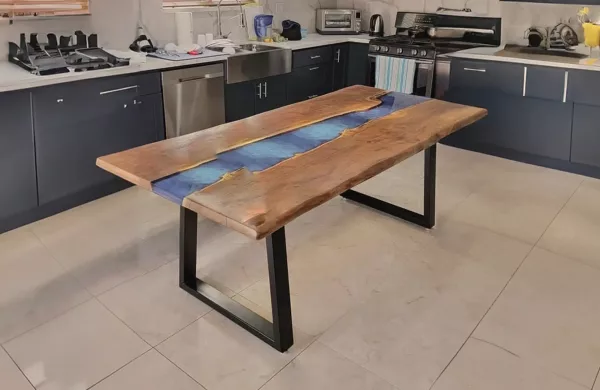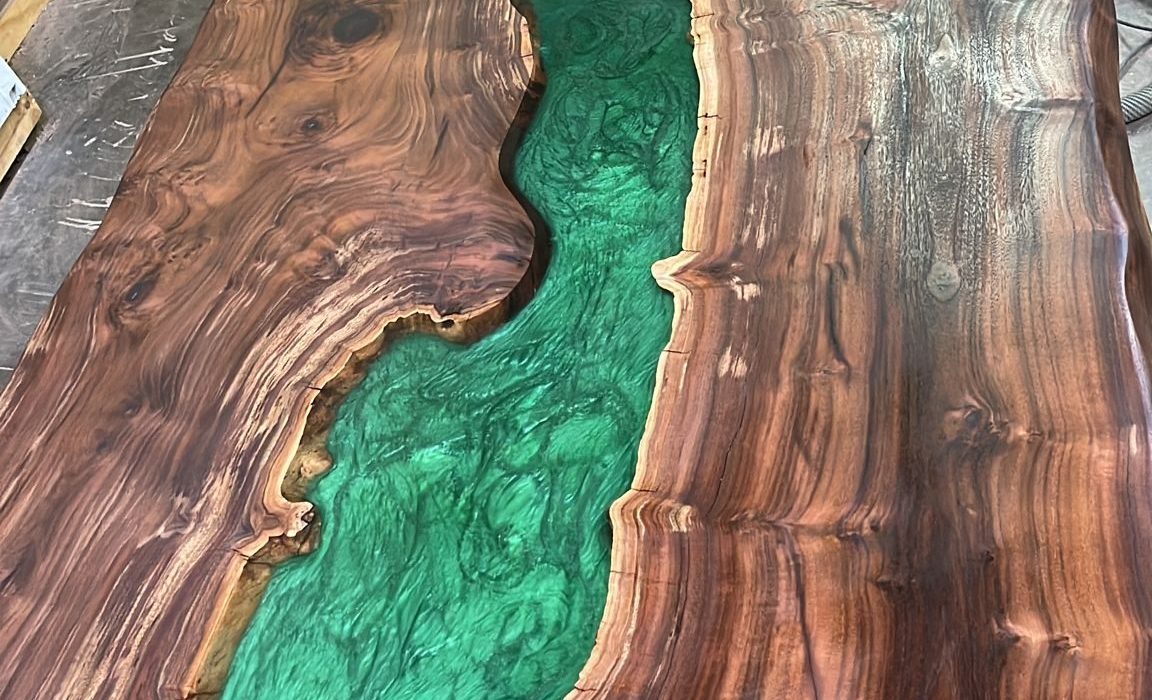
Epoxy resin tables have become the rage in recent years, thanks to their stunning aesthetic appeal, durability, and versatility. Combining wood with a clear or colored epoxy can give it an enhanced look, making it a centerpiece in any living or office space. However, not all woods are created equal, and some are better suited for epoxy resin projects than others. Let’s delve into the best types of wood for epoxy tables and learn some fascinating facts about each.
Walnut for Epoxy Tables:
- Interesting Facts:
- Walnut is often referred to as a “classic” wood, known for its dark, rich colors.
- It is one of the few woods that can naturally darken over time, adding a deepened aesthetic appeal.
- Walnuts can live up to 200 years, and some trees are known to have lived up to 600 years!
- Why it’s great for epoxy tables: The dark grains of walnut contrast beautifully with clear or tinted epoxy, making it a popular choice for high-end tables. Its durability means it won’t easily dent or scratch.
Maple for Epoxy Tables:
- Interesting Facts:
- Maple is a hardwood that’s commonly used for furniture and bowling alleys.
- Sugar maples are tapped for their sap, which is the primary source for maple syrup.
- Why it’s great for epoxy tables: Maple’s light color and intricate grain patterns make it a top pick for epoxy projects. Its smooth surface ensures the epoxy adheres well, resulting in a flawless finish.
Cherry:
- Interesting Facts:
- Cherry wood darkens naturally when exposed to sunlight, transforming its pale red to a deeper tone.
- Cherry trees are also famous for their beautiful blossoms.
- Why it’s great for epoxy tables: The warm tones of cherry wood pair well with epoxy, especially when aiming for a more refined look. Its strong yet flexible nature makes it resistant to warping.
Ash for Epoxy Tables:
- Interesting Facts:
- Ash trees are known to have been used historically to make bows.
- The species has been threatened by the emerald ash borer, a beetle that has decimated ash populations in North America.
- Why it’s great for epoxy tables: Ash has a light color with pronounced grain, providing a visually appealing contrast when combined with epoxy. Its elasticity and toughness make it ideal for tables that need to withstand daily use.
Oak for Epoxy Tables:
- Interesting Facts:
- Oak has been a symbol of strength and endurance.
- There are more than 600 species of oaks.
- It’s frequently used in winemaking barrels due to its unique flavor-enhancing properties.
- Why it’s great for epoxy tables: Oak’s distinctive grain pattern and its robustness make it a favorite for epoxy resin tables. The tannins in oak can react with certain epoxies, imparting a unique hue to the resin.
Mahogany for Epoxy Tables:
- Interesting Facts:
- Mahogany is known for its reddish-brown color which deepens over time.
- It’s a staple in fine furniture and has been used in boat building due to its resistance to water.
- Why it’s great for epoxy tables: Its rich color and tight grain make it a luxurious choice for epoxy tables. Mahogany holds the epoxy well and gives a sophisticated touch to any room.
Teak for Epoxy Tables:
- Interesting Facts:
- Teak is a tropical hardwood that’s renowned for its water resistance.
- It’s commonly used in boat decks and outdoor furniture.
- Historically, it was the primary wood used in shipbuilding.
- Why it’s great for epoxy tables: If you’re aiming for an epoxy table that will be placed outdoors or in a humid environment, teak is your best bet. Its natural oils prevent epoxy from yellowing due to UV exposure.
Conclusion:
Choosing the right wood for your epoxy table can make all the difference. The wood should not only complement the aesthetic you’re aiming for but also have properties that make it compatible with epoxy resin. Whether it’s the rich tones of walnut or mahogany, the durability of oak, or the water-resistant qualities of teak, understanding the nature and peculiarities of each wood can help you make an informed decision. Whatever you choose, ensure you prepare the wood adequately, use high-quality epoxy, and employ the right techniques for a table that’s both beautiful and durable.





